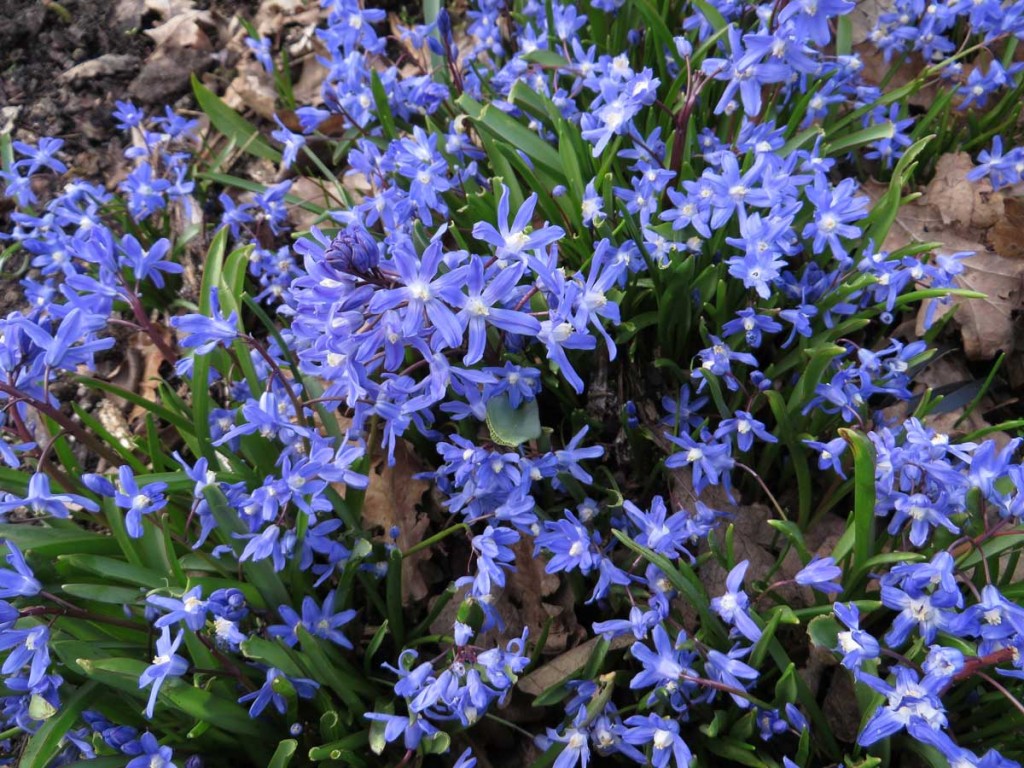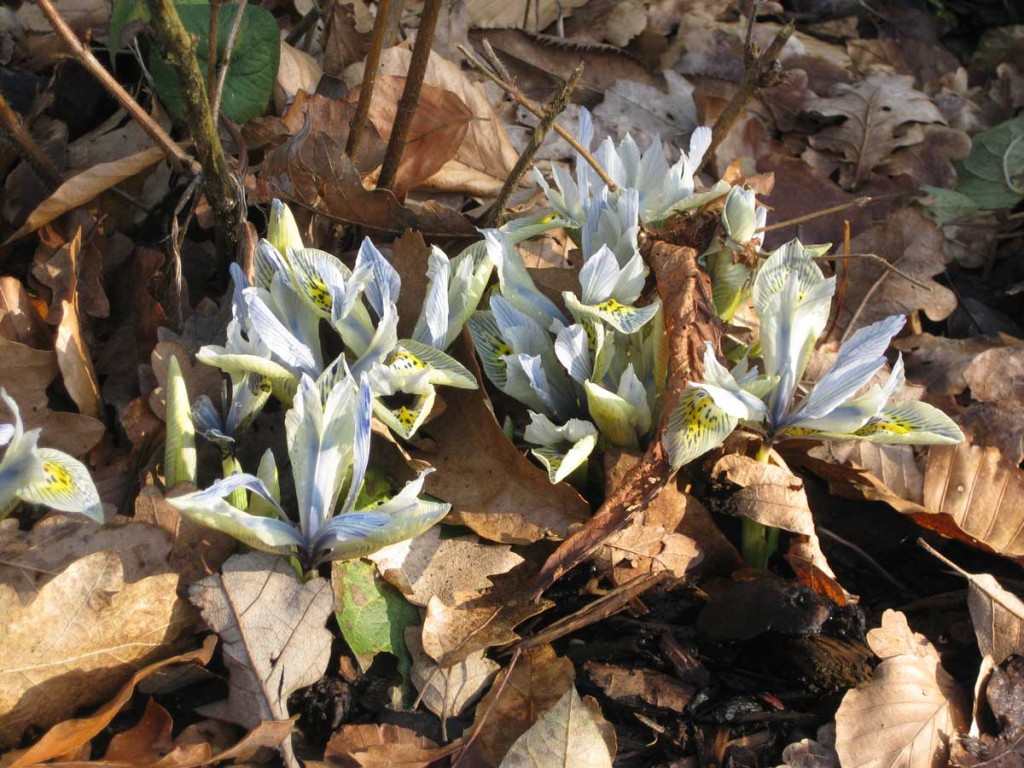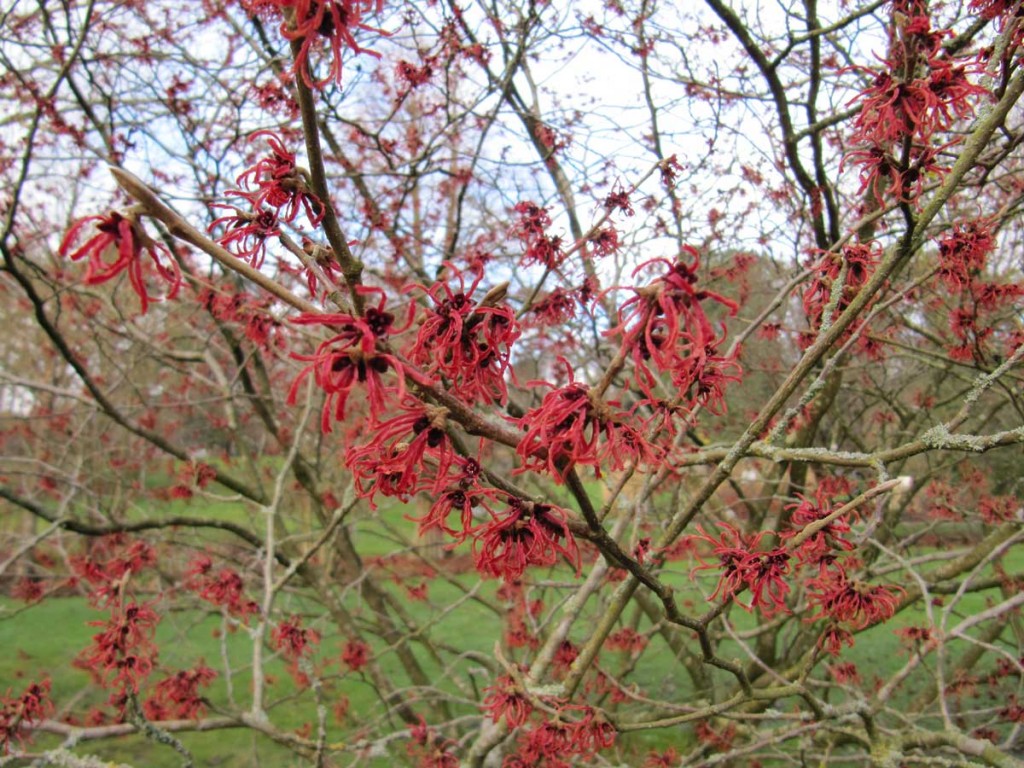February can be mild or freezing so it is difficult to plan for flowering colour. There are the tough little stalwarts namely snowdrops and crocuses in flower alongside the blue Chionodoxa or Iris reticulata. Snowdrops do well in slight shade in well drained soil. Crocus can have large flowers and blackbirds tend to like destroying the yellow flowers. I find the species crocuses such as Crocus Tommasinianus better as they have smaller flowers which open wide in the sunshine and are not damaged by birds.

Chionodoxa or Glory of the Snow has small stary white, pink or blue flowers. They will grow in light or heavy soils given adequate drainage. If you require exotic flowers then plant the tiny Iris reticulata or Iris histroides Katharine Hodgkin. They will grow in well drained soil in sun or shade. Plant small winter flowering bulbs at the edge of borders in massed groups for cheerful colour.

Another good medium sized shrub for winter is witch hazel. Hamamelis x intermedia varieties such as Diane, with red flowers or orange flowered Jelena, have branches festooned with tiny, tissue paper spidery scented flowers and good autumn leaf colour. They do best in an open but not windswept position.

If you have a warm sheltered, south or west facing wall or fence then you can try to grow a winter flowering clematis such as Clematis cirrhosa Freckles, Jingle Bells or Wisley Cream. The flowers emerge in winter in mild weather and the leaves are evergreen.
Keep on planting bare rooted fruit, shrubs or hedging plants. Feed emerging bulbs such as daffodils and tulips with a general purpose fertilizer to enable them to grow well for the following years flowers.
Remove dead foliage from plants stored in a garage or cold greenhouse to prevent diseases and keep plants lightly watered but not saturated. Put your seed potatoes in a cool light place to start to chit ie produce shoots, ready for planting from March onwards.
I am going to re-pot my Hostas, Azaleas and Blueberry all of which are grown in pots. They need some new soil each year so I tip them out of the pots, remove some of the soil from the top and base of the roots and add fresh compost such as John Innes No3 or ericaceous compost for the Azaleas and Blueberry. Feed in the growing season and they will thrive.
If you have an out or control wisteria, cut back the long thin shoots to 2 buds and prune out old wood that is congested. Cut back Buddleja, honeysuckles and Lavatera in February too.
